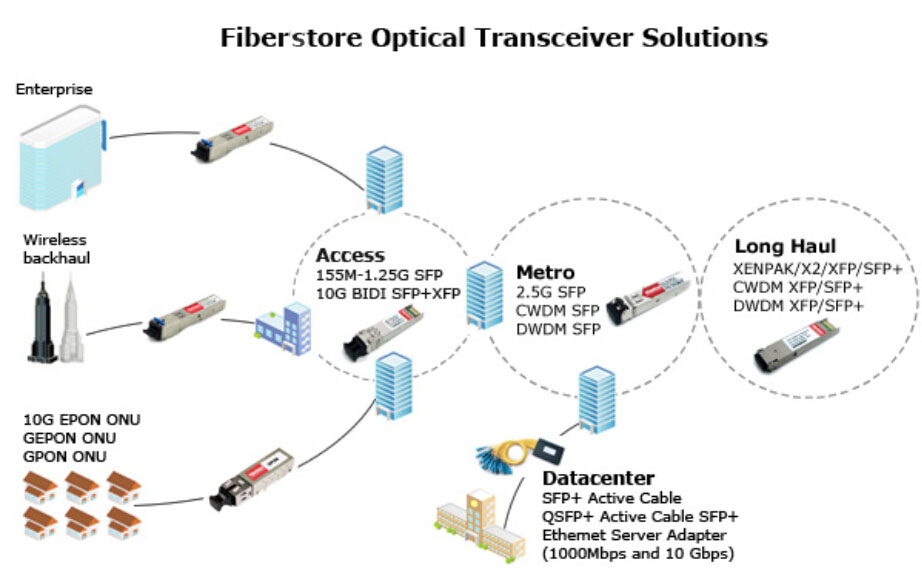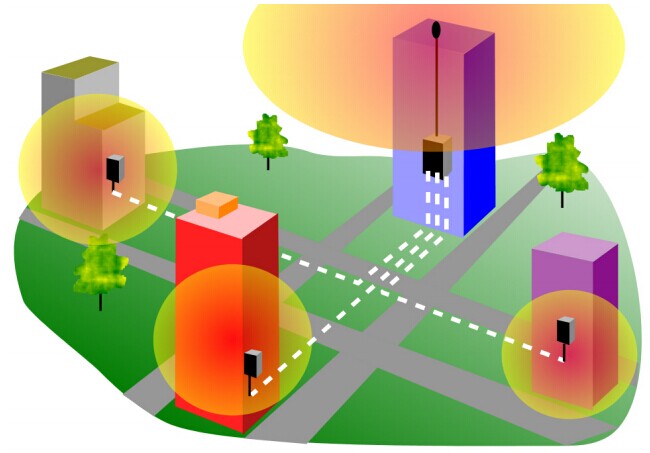Fiber Optic Transceiver Overview
What is an Optical Transceiver Module?
A fiber optical transceiver is a device that can send and receive optical information. By using an optical transceiver, network spend less space and steer clear of the necessity of getting a transmitter and receiver in the network. Able to transmit information further and faster than older models, the more recent transceivers are utilized and appearance, creating more compact, smaller sized modules than ever before.
How does it work?
A fiber optic transceiver is a accessory acclimated to forward and accept optical information. There are a number of different components on these devices, including a light source and an electrical component. The transceiver has two ends, one that an optical cable plugs into and accession for abutting an electrical device. Fiber optic transceivers combine a fiber optic transmitter and a fiber optic receiver in a single module. They are arranged in parallel so that they can operate independently of each other. Both the receiver and the transmitter have their own circuitry and can handle transmissions in both directions. In fiber optic data links, the transmitter converts an electrical signal into an optical signal, which is coupled with a connector and transmitted through a fiber optic cable. The light from the end of the cable is coupled to a receiver, where a detector converts the light back into an electrical signal. Either a light emitting diode (LED) or a laser diode is used as the light source.
Principle of Optical Transceiver Modules
Optical transceiver generally includes both a transmitter and a receiver in a single module. The transmitter and receiver are arranged in parallel so that they can operate independently of each other. Both the receiver and the transmitter have their own circuitry so that they can handle transmissions in both directions. The transmitter takes an electrical input and converts it to an optical output from a laser diode or LED. The light from the transmitter is coupled into the fiber with a connector and is transmitted through the fiber optic cable plant. The light from the end of the fiber is coupled to a receiver where a detector converts the light into an electrical signal which is then conditioned properly for use by the receiving equipment.

Application of Optical Transceiver Modules
Optical transceiver, essentially just completed the converted of data between different media, can realize the connection between two switches or computers in the 0-120km distance. Its main function is to achieve the conversion between optical-electrical and electrical-optical, including optical power control, modulation transmission, signal detection, IV conversion and limiting amplifier decision regeneration. In addition, there are some functions like security information query, TX-disable. Here is a summary in the practical application.
- Optical transceivers can interconnect with switches.
- Optical transceivers can interconnect between the switch and the computer.
- Optical transceivers can interconnect with computers.
- Optical transceivers can act as the transmission repeater.
When the actual transfer distance exceeds the nominal transmission distance of the transceiver, in particular, the actual transfer distance exceeds 120km alerts, with 2 sets transceiver back to back in the case of on-site conditions allow, repeaters or the use of “optical-optical” conversiona relay, is a very cost-effective solution. - Optical transceivers can offer conversion between single-mode and multimode fiber connection.
When the networks appear to need a single multimode fiber connection, you can use a multimode transceiver and a single-mode transceiver back-to-back connections, which can solve the problem of single multimode fiber converted. - Optical transceivers can offer WDM transmission.
The lack of resources of long-distance fiber optic cable, in order to improve the utilization rate of the fiber optic cable, and reduce the cost, transceiver and wavelength division multiplexer (WDM multiplexer) with the use of two-way information on the same fiber transmission.
Optical Transceiver modules can be classified according to the following aspects.
1. Optical Fiber Type
Single-mode fiber transceiver and Multimode fiber transceiver. The single-mode version has a transmission distance of 20 to 120 km, while the multimode one’s is 2 to 5 km. Due to the different transmission distance, the transceivers’ transmit power, receiver sensitivity and the use of wavelength will be different.
2. Optical Fiber Count
Simplex fiber transceiver and Duplex fiber transceiver. The simplex version receives the data sent in a single fiber transmission, While the duplex one receives data transmitted on a dual fiber transmission.By definition, single fiber devices can save half of the fiber, a fiber that is in the receive and transmit data, where the fiber is very applicable to resource constraints. These products use the wavelength division multiplexing techniques, mostly using the wavelength 1310nm and 1550nm.
3. Transmission Rate
Transmission rate refers to the number of gigabits transmitted per second, per unit of Mbps or Gbps. Optical modules cover the following main rate: low rates, Fast, Gigabit, 1.25G, 2.5G, 4.25G, 4.9G, 6G, 8G, 10G and 40G.
4. Package
SFP, SFP+, GBIC, XFP, XENPAK, X2, 1X9, SFF, 200/3000pin, XPAK, etc.
Fiberstore Optical Transceiver Solution
Fiberstore is a worldwide leading manufacturer & supplier of compatible fiber optical transceivers. We produce and stock for a full range of transceivers such as SFP Plus (SFP+), X2, XENPAK, XFP, SFP, GBIC. In the market, there are many brands of fiber optic transceiver, such as HP, Cisco, NETGEAR, Dell, etc. The following table is the order information of HP SFP transceiver:
| Part No. | Description |
| SFP-1GT-1MA-HP | HP JD089B X120 compatible 1000BASE-T SFP Copper RJ45 100m |
| SFP-1G85-5MA-HP | HP JD118B X120 compatible 1000BASE-SX SFP 850nm 550m DDM MMF |
| SFP-1G31-10A-HP | HP JD119B X120 compatible 1000BASE-LX SFP 1310nm 10km SMF |
| SFP-1G85-5ME-HP | HP J4858B X121 compatible 1000BASE-SX SFP 850nm 550m MMF |
| SFP-1G85-5MF-HP | HP J4858C X121 compatible 1000BASE-SX SFP 850nm 550m MMF |
| SFP-1GT-1MD-HP | HP J8177C X121 compatible 1000BASE-T SFP Copper RJ45 100m |
| SFP-1G31-10F-HP | HP J4859C X121 compatible 1000BASE-LX SFP 1310nm 10km SFP SMF |
| BLSFP-1G34-10-HP | HP J9143B X122 compatible 1000BASE 1310nmTX/1490nmRX BIDI SFP 10km SMF |

